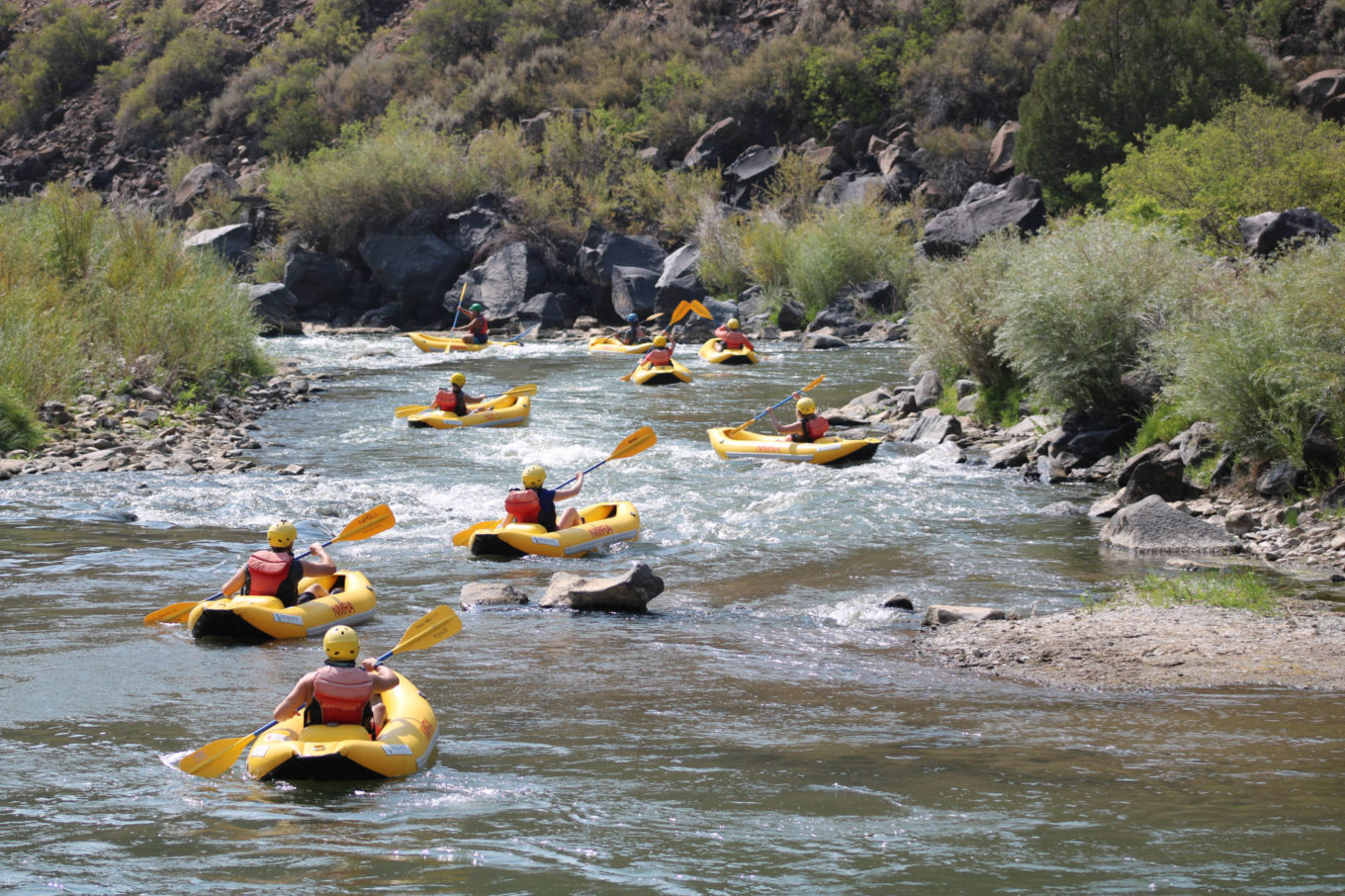Rio Grande Racecourse Half Day
$60 Child

For those of you new to the whitewater river rafting scene, the Taos Box refers to a section of the Rio Grande River, which is located just to the west Taos New Mexico. And since a lot of you reading this are probably wondering what to expect from this part of the Rio Grande, we created this article for you. So, read on and learn about the ranking top things you didn’t know about “Taos Box.” Enjoy!
As we said before, “Taos Box” is a section of The Rio Grande. The Rio Grande itself comes from San Juan Mountains of southern Colorado and, after rising, it goes past Creede, Colorado, where it enters the San Luis Valley, an ancient lake-bed. After that, the Rio Grande turns south at Alamosa, Colorado and finally makes its way towards New Mexico.
Now, once it’s made it to the southern part of the San Luis Valley, which is about 10 miles north of the New Mexico State line, the Rio Grande begins to cut its famous Rio Grande Gorge. The section with the “Taos Box” is about 16 miles upstream from the end of the wilderness part of the Rio Grande Gorge.
As a river with Class IV rapids(V in high water), the “Taos Box” is hard for beginners. However, since it is 16 miles long, for experienced rafters, this makes for a super exciting one-day rafting trip. In fact, it is ranked as the most challenging whitewater rafting trip commercially available in New Mexico.
For rapids in general, what make them hard usually has to do with a mixture of verticalness, blockages or narrowing. The Rockgarden rapid is one of the hardest the “Taos Box” has to offer. The whole way through this rapid, it’s significantly more vertical, or steeper, than your average river gradient.
This means that water moves more quickly through this rapids, and develops more energy and speed because of it. However, the reason Rockgarden is known for being the hardest of “Taos Box” is because of the blockages, i.e. rocks, which, depending on the water level, will force the rafter to think quickly to miss being thrown out of the raft.
Areas like “the Fishhook” and even “Soda Fountain,” are areas that can be run. However, once you come across Camel Rock, this should be avoided at all costs. Camel Rock has a sharp drop on the downstream side of it, and, if you end up underwater, it creates a dreadful hole. People like to call this hole “the Trench.” The Trench will literally fold your raft like a taco, will send you flying, or worse in some cases. That’s why, most experienced rafters tend to avoid the Trench by risking it all on the “Sharkfin Hold, which, although big, is not as sudden.
For more articles like this, or to get updates, subscribe to our newsletter, like us on Facebook, or follow us on Instagram.
Rio Grande Racecourse Half Day
Rio Grande Gorge Rafting Full Day